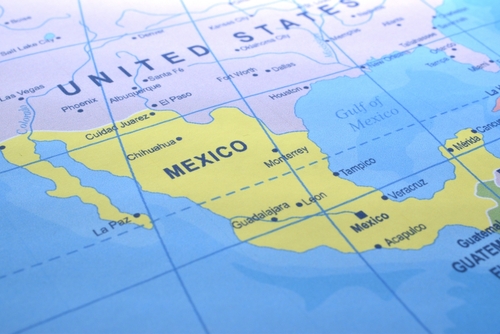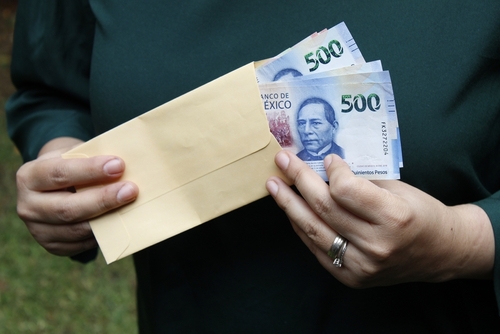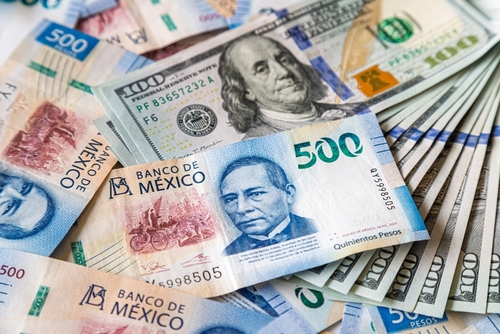We’ll walk through the key considerations—from legal requirements and available methods to costs, safety measures, and what recipients should expect when receiving funds.
Are You Allowed to Send Money to Mexico?

Yes, sending money to Mexico is legal and widely supported by financial institutions worldwide. Mexico welcomes international money transfers and has established clear regulations to facilitate these transactions.
You’ll need to provide basic information about yourself and the recipient, including full names, addresses, and valid identification. For larger transfers, additional documentation may be required to comply with anti-money laundering regulations.
Some transfer services may ask about the purpose of your transfer—whether it’s family support, education expenses, or business payments. This information helps ensure compliance with both sending and receiving country requirements.
Most legitimate transfer services are licensed to operate in Mexico and must follow strict regulatory guidelines. Always verify that your chosen service is properly licensed before sending money.
What Are the Typical Transfer Methods?

Bank wire transfers offer high security and can handle large amounts, but typically take 1–5 business days and involve higher fees. Both sender and recipient need bank accounts.
Digital transfer services like online platforms and mobile apps provide convenient, fast transfers with competitive rates. Many offer same-day or next-day delivery to bank accounts or cash pickup locations.
Cash pickup services allow recipients to collect money from thousands of locations across Mexico without needing a bank account. This method works well for recipients in rural areas or those without banking relationships.
Mobile wallet transfers enable recipients to receive money directly to their digital wallets, which they can use for purchases or withdraw as cash. This option is growing rapidly in Mexico.
Cryptocurrency transfers offer near-instant delivery and low fees, though both sender and recipient need familiarity with digital currencies and access to exchange services.
How Long Will It Take for the Money to Arrive?

Transfer speed depends on your chosen method and several other factors.
Digital services typically deliver money within minutes to hours when sending to mobile wallets or for cash pickup. Bank account deposits usually take 1–2 business days.
Traditional bank wires generally require 1–5 business days, with same-bank transfers often processing faster than cross-bank transactions.
Several factors can affect timing:
- Transfers sent during Mexican banking hours (Monday–Friday, 9 a.m.–4 p.m. local time) typically process faster
- Weekend and holiday transfers may experience delays
- Large amounts might require additional verification time
- First-time transfers often take longer due to security checks
Mexican holidays like Independence Day (September 16) and Christmas can delay transfers, so plan accordingly for urgent payments.
What Are the Costs Involved?

Transfer costs include multiple components that vary significantly between services.
Transfer fees vary by service, transfer amount, and delivery method. Cash pickup often costs more than bank deposits.
Exchange rate margins reflect the difference between the mid-market rate and the rate you receive.
Recipient fees may apply for certain pickup locations or services, though many providers don’t charge recipients directly.
To compare true costs, look at the total Mexican pesos your recipient will receive—not just upfront fees. A service with slightly higher fees but a better exchange rate can still deliver more money overall. Some providers run first-transfer promotions or reduced fees for larger amounts.
Are There Limits on How Much You Can Send?
Transfer limits depend on the provider, your verification level, and regulatory requirements. Many services allow higher limits after additional verification (e.g., government-issued ID and proof of income source). Daily, monthly, and annual limits may apply, especially for new accounts.
Mexico doesn’t impose specific limits on incoming transfers, but amounts over the equivalent of USD $10,000 may trigger additional reporting requirements.
How Safe Is It to Send Money to Mexico?
Sending money to Mexico through legitimate, regulated services is very safe when you follow security best practices.
Choose regulated providers that display licensing information and comply with financial regulations in both sending and receiving countries.
Verify recipient information carefully before confirming transfers.
Protect your personal information by using secure connections and never sharing login credentials.
Be aware of common scams (fake emergencies, overpayment schemes, romance scams) and only send money to people you trust.
Keep transfer receipts until the recipient confirms collection.
What Should the Recipient Expect?
Cash pickup: Recipients need valid government-issued photo ID and the transfer reference number. The name on their ID must exactly match the recipient name you entered.
Bank deposits: Recipients typically receive a notification when funds arrive; timing depends on the receiving bank’s policies.
Mobile wallet transfers: Recipients may need to download a specific app and complete registration before accessing funds.
Popular cash pickup networks in Mexico include Oxxo convenience stores, Elektra, and major banks such as Bancomer and Santander. Unclaimed transfers may be returned to the sender after a defined period (commonly 30–90 days).
Making Your Transfer Decision
Compare total costs rather than focusing solely on fees. Consider exchange rates, delivery speed, and convenience for both you and your recipient. Verify that the service is regulated and has solid customer reviews. Always double-check recipient details and keep your receipt until the transfer is collected.
FAQ
1. What is the cheapest way to send money to Mexico?
The cheapest option depends on the amount and speed you need. Online money transfer platforms typically offer lower fees and competitive exchange rates compared to traditional banks. Compare providers to find the best overall value.
2. How long do money transfers to Mexico take?
Standard bank transfers may take 2–5 business days, while many online services or cash pickup options can be near-instant. Always check the provider’s estimated processing time before you send.
3. Are there limits on how much money I can send to Mexico?
Yes. Limits vary by provider and verification level, ranging from a few hundred dollars up to much higher amounts per transaction or per day/month after additional verification.
4. Is it safe to send money to Mexico?
Yes—when you use regulated, trusted services that offer secure payment methods and transfer tracking. Follow best practices for security and verify recipient details.
5. Can I send money to a bank account in Mexico?
Absolutely. You’ll typically need the recipient’s full name, account number, and the bank’s CLABE (Clave Bancaria Estandarizada), Mexico’s standardized bank account number.